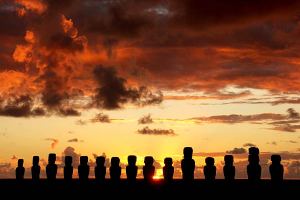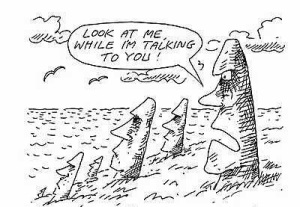Fenia-julia
The purpose of this analysis is the human population problem which exists nowadays.The rapid growth of the world’s population over the past one hundred years results from a difference between the rate of birth and the rate of death. The human population will increase by 1 billion people in the next decade. The growth in human population around the world affects all people through its impact on the economy and environment. The current rate of population growth is now a significant burden to human well-being.
Causes of rapid population growth
Until recently, birth rates and death rates were about the same, keeping the population stable. During the Industrial Revolution, a period of history in Europe and North America where there were great advances in science and technology, the success in reducing death rates was attributable to several factors such as:
- Improvement in public health
The priorities for getting rid of poverty, improving food supply, ending malnutrition, and providing adequate housing coincide at all points with those required for balanced population growth.
- Food production distribution
During the past 10 years, the world’s food production has increased by 24 per cent, outpacing the rate of population growth. However, this increase was not evenly distributed throughout the world. Lack of money to buy food is the problem of malnourishment. Poverty, in effect translates the world adequacy into national and local shortages. Within households, men and boys have priority for whatever food is available, while women and children, especially girl children are the first to suffer malnutrition. Few resources are available to women, even though they are often responsible the for food supply.
Cornucopians vs. Cassandras
Cornucopians state that environmental conditions are better and human ingenuity will solve any kind of problem. On the other hand, Cassandras state that environmental conditions are worse and predict doom and disaster.
Is it really problem?
There is controversy over whether population growth is good or bad. Our opinion about the human population problem is that really exists but that does not mean we cannot find a solution. Over-population and continuing population growth are making substantial contributions to the destruction of Earth’s life support systems. Population projections represent the playing out into the future of a set of assumptions about future fertility and mortality rates. More public education is needed to develop more awareness about population issues. Facts like the size or the growth rate of the human population should be in the head of every citizen. Schools should inform students about population issues in order for them to make projections about the future generations. Teachers, parents, other educators, politicians and other concerned citizens can practice how to make good decisions in everyday life. Decisions about family size and resource will affect the future generations. Through community forums, specific issues about the population growth can be discussed and possible action plans can be developed.
Paul Ehrlich

Paul Ralph Ehrlich (born 29 May 1932) is an American biologist and educator who is the Bing Professor of Population Studies in the department of Biological Sciences at Stanford University and president of Stanford’s Center for Conservation Biology. By training he is an entomologist specializing in Lepidoptera (butterflies), but he is known better as an ecologist and a demographer, specifically for his warnings about unrestricted population growth and limited resources. Ehrlich became well-knownafter publication of his controversial 1968 book The Population Bomb.
IPAT model
I=PAT is the lettering of a formula put forward to describe the impact of human activity on the environment.
I = P × A × T
In words:
Human Impact (I) on the environment equals the product of P= Population, A= Affluence, T= Technology. This describes how our growing population, affluence, and technology contribute toward our environmental impact.
The equation can aid in understanding some of the factors affecting human impacts on the environment.
Ehrlich’s predictions
Ehrlich’s views on the situation have evolved over time, and he has presented a number of different proposed solutions. However, he always has been a strong advocate of government intervention into population control. In Population Bomb he wrote, “We must have population control at home, hopefully through a system of incentives and penalties, but by compulsion if voluntary methods fail. We must use our political power to push other countries into programs which combine agricultural development and population control.” Voluntary measures he has supported include the easiest possible availability of birth control and abortions. He was not opposed to mandatory population control if necessary, including the suspension of food aid to countries which were considered “hopeless” to feed their populations.
Hans Rosling
Hans Rosling (born 27 July 1948 in Uppsala, Sweden) is a Swedish medical doctor, academic, statistician and public speaker. He is Professor of International Health at Karolinska Institute and co-founder and chairman of the Gapminder Foundation, which developed the Trendalyser software system.
On 21 August 1981, Rosling discovered an outbreak of konzo, a paralytic disease, and the investigations that followed earned him a Ph.D. degree at Uppsala University in 1986. He spent two decades studying outbreaks of this disease in remote rural areas across Africa and supervised more than ten Ph.D. students. Outbreaks occur among hunger-stricken rural populations in Africa where a diet dominated by insufficiently processed cassava results in simultaneous malnutrition and high dietary cyanide intake.
Rosling’s research has also focused on other links between economic development, agriculture, poverty and health in Africa, Asia and Latin America. He has been health adviser to WHO, UNICEF and several aid agencies. In 1993 he was one of the initiators of M.S.F. in Sweden. At Karolinska Institutet he was head of the Division of International Health (IHCAR) from 2001 to 2007. As chairman of Karolinska International Research and Training Committee (1998–2004) he started health research collaborations with universities in Asia, Africa, the Middle East and Latin America. He started new courses on Global Health and co-authored a textbook on Global Health that promotes a fact-based world view.








